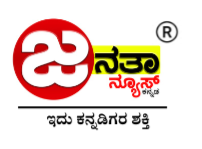Introduction
In today’s fast-paced digital economy, organizations are under pressure to implement business solutions that drive rapid value, reduce risks, and adapt quickly to changing needs. Microsoft Dynamics 365, a powerful suite of intelligent business applications, is increasingly becoming the ERP and CRM platform of choice for enterprises seeking digital transformation. However, the complexity of implementing ERP systems traditionally makes deployments long, rigid, and costly. Enter Agile methodology and, more specifically, the Scrum framework—a game-changer in how Microsoft Dynamics 365 implementation services are delivered.
The Traditional ERP Implementation Challenge
ERP implementations have historically followed the Waterfall model: a linear, sequential approach where planning, development, testing, and deployment occur in silos. This model often struggles to adapt to mid-project changes and delays feedback until the end, leading to unmet user expectations and scope creep. In contrast, Scrum, as part of the Agile family, introduces a flexible, iterative approach that emphasizes collaboration, adaptability, and continuous improvement.
Understanding Scrum in the Context of ERP
Scrum is a lightweight yet powerful framework designed for managing complex projects. In the context of ERP and CRM systems like Dynamics 365, it introduces:
- Sprints: Short, time-boxed iterations (typically 2-4 weeks) focused on delivering a potentially shippable product increment.
- Product Backlog: A dynamic list of features, enhancements, and fixes prioritized by business value.
- Scrum Roles: Including the Product Owner (business stakeholder), Scrum Master (facilitator), and Development Team (cross-functional members).
- Daily Stand-ups and Retrospectives: Short, structured meetings to ensure continuous communication and process improvement.
Benefits of Scrum-Based Microsoft Dynamics 365 Implementation Services
1. Accelerated Time-to-Value
Scrum encourages early delivery of working components of the system. Rather than waiting for a “big bang” go-live, Dynamics 365 features can be rolled out in phases, allowing organizations to start using and gaining value from the system much earlier.
2. Greater Flexibility and Adaptability
Requirements often evolve during implementation. Scrum’s iterative nature allows project teams to respond quickly to feedback and changes without derailing the entire timeline.
3. Enhanced Stakeholder Engagement
Involving the Product Owner and other key users throughout the process ensures that business needs are consistently prioritized and validated. This minimizes rework and increases user satisfaction.
4. Reduced Implementation Risk
Frequent testing, demonstrations, and feedback loops allow for early detection of issues. This incremental approach prevents costly late-stage surprises.
5. Continuous Improvement
The retrospective ceremonies in Scrum provide a structured way to learn from each sprint and refine the approach, tools, and team dynamics.
Applying Scrum to Dynamics 365 Implementation Phases
Here’s how the Scrum framework aligns with the typical stages of Microsoft Dynamics 365 implementation services:
1. Envisioning and Planning
- Identify stakeholders and form the Scrum team.
- Build an initial Product Backlog based on high-level business processes.
- Establish a shared understanding of the project scope and goals.
2. Sprint 0 – Foundation Setup
- Define architecture and environments.
- Set up development, testing, and production instances of Dynamics 365.
- Finalize tools for collaboration, version control, and backlog management.
3. Sprint Execution (Multiple Iterations)
- During each sprint, select backlog items (user stories) for implementation.
- Conduct daily stand-ups to track progress and resolve blockers.
- End each sprint with a demo and gather feedback from stakeholders.
- Conduct sprint retrospectives to continuously improve team performance.
4. User Acceptance Testing (UAT) and Training
- Since working features are delivered incrementally, UAT can be done early and often.
- Stakeholders are already familiar with the system through previous demos, reducing training time.
5. Go-Live and Post-Deployment Support
- A phased or pilot go-live is easier to manage.
- Post-launch feedback can be handled through additional sprints to further fine-tune the system.
Challenges and Mitigations
Despite its many advantages, using Scrum for ERP implementations like Microsoft Dynamics 365 does present unique challenges:
- Cultural Resistance: Organizations unfamiliar with Agile may resist the shift. Mitigation: Begin with Agile coaching and leadership alignment.
- Complex Dependencies: ERP systems often involve tightly coupled modules. Mitigation: Careful backlog grooming and sprint planning with domain experts.
- Long Configuration Cycles: Certain customizations in Dynamics 365 may not fit easily into short sprints. Mitigation: Use spikes (research tasks) and staggered sprint goals to accommodate these.
Real-World Use Case: Agile in Action
Consider a retail company migrating to Microsoft Dynamics 365 for Finance and Operations. By adopting Scrum:
- They conducted sprint-based rollouts for different business units.
- Business users provided ongoing feedback, leading to better customization.
- The implementation team reduced total project time by 30% compared to a traditional model.
This iterative approach allowed the company to adapt the solution to real operational needs as they emerged, rather than guessing upfront.
Choosing the Right Partner for Agile Dynamics 365 Implementation
The success of an Agile approach hinges on the experience of the implementation partner. Look for vendors offering Microsoft Dynamics 365 implementation services with proven Agile credentials, certified Scrum professionals, and a track record of iterative deliveries.
Ideal partners also provide:
- Pre-built templates for Dynamics 365 modules.
- DevOps integration for automated deployments.
- Strong governance models that align Scrum with regulatory and compliance requirements.
Conclusion
As businesses strive for speed, innovation, and responsiveness, blending Agile methodologies with ERP implementation becomes not just a preference but a necessity. Scrum frameworks empower organizations to approach Microsoft Dynamics 365 implementation services with confidence, delivering quicker results, higher user satisfaction, and lower overall risk.
By rethinking traditional rollouts and embracing Scrum, companies position themselves for sustainable digital transformation—one sprint at a time.


